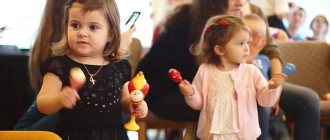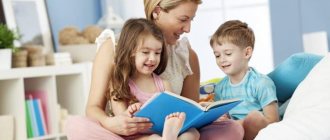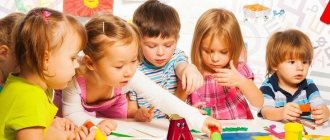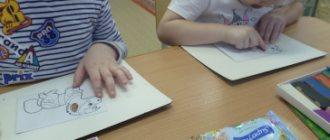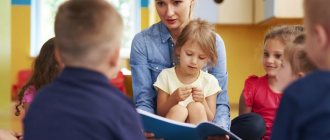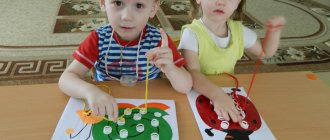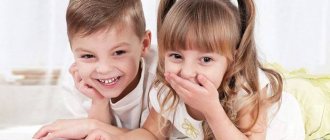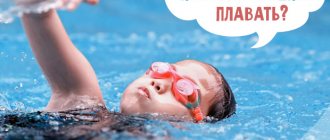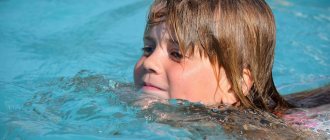By the age of three, a little person often shows disobedience: he does not fulfill requests, screams, and throws tantrums. Parents throw up their hands in bewilderment, not knowing what to do in this situation: rush to calm the baby, scold, punish, ignore such behavior. A three-year-old child needs parental attention, and not only relationships in the family depend on how mom and dad behave, but also how their baby will grow up.
Crisis of three years
Poor behavior at the age of three is not always an indicator of a bad temperament or mood swings. In order to properly raise a child, parents must first figure out why he behaves this way. It is worth noting that at this age, boys and girls tend to be capricious and throw tantrums in the same way.
First you need to understand such a psychological term as frustration. This is a state of an adult or child when desires and needs cannot be fully satisfied. The baby grows up when he begins to realize that not all his desires are fulfilled. A sensitive, understanding parent will be able to immediately understand when a child’s hysteria is due to the fact that his “wants” are not being fulfilled. But a baby can be capricious for other reasons: physical illness, quarrels in kindergarten, misunderstanding on the part of the teacher, etc.
Interesting: How to help a child learn to do homework - without scandals and disputes
Why does a 3-4 year old child behave badly?
There can be many reasons for bad behavior. Child psychologists identify the main reasons that you should pay attention to.
- The child attracts the attention of adults. When parents are constantly busy and cannot devote time to the baby, he wants to attract attention by any means. Since a three-year-old does not yet know how to build a constructive dialogue, he begins to behave badly, be capricious, and cry. Let mom and dad scold me, but they’ll drop what they’re doing and take care of me.
- The baby is asserting itself. From about two years old, the baby begins to show independence. Surely moms and dads remember the endless repetition: “I myself,” “I myself.” Parents consider a three-year-old child to be small and try to take care of him in every possible way. And the three-year-old resists parental control, including through disobedience.
- The child takes revenge on his parents. Whims, hysterics, screams can be revenge for an insult caused by mom or dad. Parents may not even realize that they have hurt the baby. For example, my mother forced me to finish eating tasteless porridge, and my father took my tablet and forbade me from watching cartoons.
- Low self-esteem. If a child is disappointed in something, has lost faith in himself, he may behave aggressively and inappropriately.
Developmental classes by a teacher-psychologist with children 4-5 years old
When implementing correctional activities, kinesiological exercises (adapted version) were used - a set of movements that makes it possible to intensify interhemispheric interaction, develop commissures as interhemispheric integrators, through which the hemispheres exchange information, and synchronization of the hemispheres occurs. Classes are suitable for children from 4 to 5 years old, taking into account their physiological capabilities.
Lesson No. 1.
- Exercise “Big Good Animal” (Artsishevskaya)
- Stretch – Egg, string. (Sirotyuk)
- Breathing exercises. Lying on your back. Hands on the stomach, when inhaling, the stomach inflates – the “ball” is inflated, pause – exhale “y”.
- Oculomotor exercises (Glowing ball) Starting position - lying on your back. The head is fixed. The eyes look straight ahead. The training of eye movements begins in four main (up, down, right, left) and four auxiliary directions (diagonally); bringing the eyes to the center. The eyes first look at arm's length, then at elbow distance, and finally closer to the bridge of the nose. The exercise is performed at a slow pace (from 3 to 7 seconds) with fixation in extreme positions for a time equal to the previous eye movement. When doing oculomotor exercises, it is recommended to use any bright objects, small toys, etc. to attract the child’s attention. At the beginning of mastering these exercises, the child follows the object moved by the adult, and then moves it independently, holding it first in his right, then in his left hand, and then then both hands together. Those areas in the child’s field of vision where the gaze “slips” should be given additional attention, “drawing” them several times until the retention becomes stable.
- Rhythmic imitation game.
It is raining,
And we are running -
We hurry to hide in the house.
The rain will knock on the window -
We won't let you in anyway.
- Finger gymnastics: “Ring”, Exercises with an expander, “Su Jok”
- Grouping by color, shape, size - geometric shapes
- Generalization and classification “Find a family”
- Relaxation “Vibration”.
What a wonderful day today!
We will drive away melancholy and laziness.
They shook their hands.
Here we are healthy and cheerful.
Lesson No. 2.
1 Greeting: Claps, “Yoga gymnastics for kids” - Artsishevskaya
"Big Good Animal"
2 Stretch – Egg, string.
3 Breathing exercises. Lying on your back. Hands on the stomach, when inhaling, the stomach -
The “ball” is inflated, pause – exhale “y”.
4 Oculomotor exercises (Glowing ball)
5 Finger gymnastics: “Ring”, Exercises with an expander, “Su Jok”
6 Grouping by color, shape, size - geometric shapes
7 Attention - “What shapes are the traffic light and the fish made of?”, Mathematics.
8 We'll tell you and show you (for children over 5 years old)
Goal: development of auditory attention, self-control of movement coordination.
Right hand - on the shoulder Left hand - on the shoulder
Left hand - on the side Right hand - on the side
Hands to the sides, hands down Hands up, hands down
And turn right and turn left.
Lesson No. 3.
1 Greeting: Claps, “Yoga gymnastics for kids” - Artsishevskaya
"Big Good Animal"
2 Stretch – Egg, string.
3 Breathing exercises. Lying on your back. Hands on the stomach, when inhaling, the stomach -
The “ball” is inflated, pause – exhale “y”.
4 Oculomotor exercises (Glowing ball)
5 Finger gymnastics: “Ring”, Exercises with an expander, “Su Jok”
"Fist, rib, palm"
6 Development of tactile sensations “Magic bag” – geometric
figures
7 Attention – “Fun Maze”, Orientation task “Color the Rockets”
8 Relaxation “Puppets” (Artsishevskaya)
Lesson No. 4.
1 Greeting: Claps, “Yoga gymnastics for kids” - Artsishevskaya
"Big Good Animal"
- Stretch – Egg, string, “Star Stone”
- Body exercises “Embryo”, “Rocking chair” (Sirotyuk)
4 Breathing exercises. Lying on your back. Hands on the stomach, when inhaling, the stomach -
The “ball” is inflated, pause – exhale “y”.
5 Oculomotor exercises (Glowing ball)
6 Finger gymnastics: “Ring”, Exercises with an expander, “Su Jok”
"Frog"
7 Orientation exercises –
Find the train that goes to the left, the bow on the left ear
The steamer goes to the left, a bow on the right ear
The truck goes to the left bow on the right ear
7 Attention - “Find objects that are similar to these geometric shapes.
Connect them with lines”, “Draw icons in each figure as in
sample”, “Pick a patch to the rug”
8 Relaxation “Puppets”
Lesson No. 5. (06/09/2017)
1 Greeting: Claps, “Yoga gymnastics for kids” - Artsishevskaya
"Big Good Animal"
- Laying out “Fetal position” (entry into class)
- Stretch – Egg, string, “Star Stone”
- Bodily exercises: “Bicycle”. The child imitates riding a bicycle with his feet, touching the opposite knee with his elbow; then - the other knee; then again the opposite.
"Rocking chair"
5 Breathing exercises. Lying on your back. Hands on the stomach, when inhaling, the stomach -
The “ball” is inflated, pause – exhale “y”.
6 Oculomotor exercises (Glowing ball)
7 Finger gymnastics: “Ring”, Exercises with an expander, “Su Jok”
“Frog”, “Fist, rib, palm”
8 Orientation exercises –
Find the train that goes to the left, the bow on the left ear
The steamer goes to the left, a bow on the right ear
The truck goes to the left bow on the right ear
9 Attention - “Cross out all the mushrooms, circle all the flags.”
10 Relaxation “Puppets”
Lesson No. 6.
- Greetings: Artsishevskaya “Big Good Animal”, Pazukhina “Repeat the Pose” p.36
- Laying out “ Fetal Pose” (entry into class)
- Stretching – Egg, string, “Cobra”
- Breathing exercises. Lying on your back. Hands on stomach while inhaling
the stomach - the “ball” is inflated, pause - exhale “y”.
- Oculomotor exercises on the back (glowing ball)
- Bodily exercises, "Bicycle". The child imitates riding a bicycle with his feet, touching the opposite knee with his elbow; then - the other knee; then again the opposite. "Rocking chair"
7 Finger gymnastics: “Show with your hands”, “Tell poems with your hands”.
(Pazukhina)
- Exercise to develop auditory attention and perception “Find a Pair”
- Associations: “Bee, hare”
- “Systematization, Complete the figures” – “Development of visual memory and visual attention.”
- Relaxation “Puppets”
Lesson No. 7.
- Greeting: “Big kind animal”, Pazukhina “Repeat the pose” p.36
- Laying out “ Fetal Pose” (entry into class)
- Stretching – Egg, string, “Cobra”
- Breathing exercises. Lying on your back. Hands on the stomach, when inhaling, the stomach -
The “ball” is inflated, pause – exhale “y”.
- Oculomotor exercises on the back, sitting (Glowing ball)
- Bodily exercises: “Bicycle”. The child imitates riding a bicycle with his feet, touching the opposite knee with his elbow; then - the other knee; then again the opposite.
"Rocking chair", "All-terrain vehicle"
- Finger gymnastics: “Show with your hands”, “Tell poems with your hands - White-sided Magpie”. (Pazukhina, p. 44)
- Development of tactile perception: “Recognize the figure”
9 “Systematize, Complete the figures” - learn to draw geometric
figures.
10 Relaxation “Puppets”
Lesson No. 8.
Greeting: Artsishevskaya “Big Good Animal”
- Laying down Fetal position (entry into class)
- Stretching – Egg, string, “Cobra”
- Breathing exercises. Lying on your back. Hands on the stomach, when inhaling, the stomach inflates - the “ball” is inflated, pause - exhale “y”.
- Oculomotor exercises on the back, sitting (Glowing ball)
- Bodily exercises: “Bicycle”. "Rocking chair", "All-terrain vehicle"
- Finger gymnastics: To the music of “Ladoshka”
- Development of fine motor skills: “Draw the same figures in the empty squares”, “Help the fish swim to the algae”;
- Thinking, spatial perception: “Place the objects on the shelves.”
- “Drawing “Living Hand”. Take a pencil in your hand, place the other in the middle of the sheet and trace your hand, each finger separately. Then color them with colored pencils, draw eyes, nose and mouth.
10 Psychomotor development: “Puppets”
Lesson No. 9.
Greeting: “Catch the ball and say it in one word”
- Laying out “ Fetal Pose” (entry into class)
- Stretching – “Rays”, “Cobra”
- Breathing exercises. Sitting. Hands on the stomach, when you inhale, the stomach inflates, pause, exhale “mo-mo-mo-ma-ma-ma.”
- Oculomotor exercises while sitting (Glowing ball)
- Bodily exercises: “Bicycle”. "Rocking chair", "All-terrain vehicle"
- Finger gymnastics: To the music of “Palms”, “Guess the image by touch”
- Development of fine motor skills: “Draw paths, Draw geometric shapes”;
- Spatial perception: “Place the objects on the shelves.”
- Psychomotor development: “Puppets”
What do parental restrictions lead to?
When adults forbid something to a child, they seem to draw a boundary to protect the child. Parental prohibitions perform a certain educational function. The baby learns to control his emotions and understand when to stop being capricious. Of course, children do not like when something is forbidden to them, so they can react with anger, scandals, and tears. But parental restrictions are necessary in order to properly raise a child. With defined boundaries, the baby will learn to be disciplined and feel that his parents really care about him.
Nowadays, there are often cases when adults allow children almost everything. This is due, first of all, to the fact that in childhood, parents were forbidden a lot. The child grows and begins to realize that with the help of manipulation you can get whatever you want. As a rule, a person who was allowed a lot in childhood grows up childish, unable to make independent decisions, and capricious.
The other extreme is a large number of prohibitions on the part of adults. In this case, the person will grow up to be dependent, timid, and will seek the approval of mom and dad all his life.
To avoid mistakes in parenting, adults need to understand that prohibitions must have a strong justification. The child must be explained why something is forbidden to him, and what consequences can be expected if he does not obey. Parental prohibitions can be divided into two main categories.
- Conscious prohibitions. Mom or dad, by forbidding something to a child, thereby protect him from negative consequences. For example, you shouldn’t go outside in winter without a hat, otherwise you might catch a cold. This also includes prohibitions that form discipline and obedience.
- Unconscious prohibitions. The reason for unconscious prohibitions can be the personal experiences of an adult: “We won’t go to the amusement park because you didn’t listen to me and didn’t do what I asked you to do.” Parents may also prohibit their children from doing something because of their own envy. If they didn’t have enough toys and sweets in childhood, they will unconsciously project their childhood grievances onto their own kids. Also, the basis for unconscious prohibitions can be increased anxiety for children. For example, a baby wants to get a puppy. There is nothing wrong with his desire. On the contrary, a four-legged friend will give the baby a lot of joy, teach him to care and love. But the mother refuses her son or daughter because she is afraid that the dog may offend the child, because of it the baby will have an allergic reaction, etc.
If parents forbid something to a three or four year old, it should not be done with condemnation. Prohibitions should not make the child feel guilty and ashamed. For educational purposes, you should not prohibit your child from playing with his favorite toys or watching cartoons. When prohibiting something, be sure to explain why you are doing this. Only through dialogue can the desired results be achieved.
Entrance
The program is designed for 3 years, age - 3-6 years.
Explanatory note
Preschool childhood is a period of learning about the world of human relationships; the child models them in a role-playing game, which becomes his leading activity. While playing, he learns to communicate with peers.
Preschool childhood is a period of creativity. The child masters speech creatively and develops a creative imagination. A preschooler has his own special logic of thinking, subject to the dynamics of figurative ideas.
In preschool childhood, the complexity of ideas about the life world appears, determined by the subordination of motives. There is a differentiation of lines of ontogenesis leading to one or another type of representation of the life world; stable (supra-situational) motives are formed and the orientation of the personality begins to take shape. Most children demonstrate the importance of ideas about the complexity and difficulty of the world.
In preschool age, in modern social conditions, there are many cases of children diagnosed with ODD and dysarthria, disorders: bilingualism. This can affect children's mental development, in the intellectual, emotional and behavioral areas.
There are also children with foreign languages - this is a speech disorder in the perception of a foreign language, which in turn affects the mental development of children in intellectual development and in the emotional sphere.
Migrants, in turn, speak their native language at home, and when they come to a general education kindergarten, they must speak Russian. And, due to the fact that migrants’ parents speak mainly their native language and children do not understand Russian, this, in turn, affects the mental development of children.
Disturbances, disorders, vices, defects or shortcomings of verbal speech (the terms are unambiguous) are called all kinds of deviations from the norm, i.e. from the generally accepted manifestation or perception of it in a given language, typified in a given language (standard speech), starting with violations of individual components of the word and ending with the complete absence of the possibility of verbal communication (dumbness).
To a much lesser extent, speech disorders are caused by diseases of an organic or functional nature. In most of these cases, as a rule, the disease process has ended (for example, with deaf-muteness, aphasia, alalia, dysarthria, etc.), causing some features of psychophysical development in the future, sometimes supported by residual phenomena (headaches, convulsions, etc. .)
To a greater extent, mental development disorders are based on pedagogical neglect and child-parent relationships.
The complex psychological and pedagogical task of preschool education is to ensure the assimilation of not only the body of specific knowledge in preschool disciplines, but also to form in students ideas about generalized techniques and ways of performing various actions, which, in turn, will ensure the assimilation of specific subject-curricular content. (Elkonin D.B. Psychology of play. - M., 1978.)
Recently, educators have noted an increase in the number of children with difficulties in mastering new material, created by the insufficient level of their cognitive and personal development. Therefore, providing effective psychological assistance in the development of preschool children is currently becoming a particularly urgent task. (V.V. Lebedinsky. Disorders of mental development in childhood.)
In our kindergarten, a diagnosis of mental development was carried out in children aged 3-4 years and 5-6 years, aimed at identifying the level of development of logical thinking, attention, memory, imagination and motor skills. After which correctional and developmental classes are carried out.
The diagnostic results showed that children with speech impairments have impairments in cognitive activity.
Correctional and developmental classes are carried out repeatedly due to the fact that the level of development of cognitive activity, i.e., the zone of proximal development, is not relevant. When the classes are repeated, the children themselves participate in play activities with minimal support from the leader. Therefore, correctional and developmental classes are carried out repeatedly from the zone of proximal development to the current level (Vygotsky L.S.).
Theoretical foundations of the program
The program is built on the implementation of the principle of system differentiation, which is the leading mechanism of mental development. (Elkonin D.B., Lebedinsky V.D.)
Goal : formation of psychological cognitive structures of preschool children with speech disorders through specially organized activities.
Program objectives:
- promote the formation of visual and figurative thinking;
- formation of prerequisites for mastering educational activities;
- development of the child’s speech activity;
- development of arbitrariness of mental activity and behavior;
- expanding the sphere of self-awareness and increasing confidence in one’s capabilities;
- development of motor functions.
Focus and level of the program
The presented correctional and developmental program is aimed at preventing the manifestations of various forms of preschool disaptation and creating the prerequisites for successful mastery of program material.
Addressee: preschool children with speech disorders.
Approbation
This program was developed and tested over a period of 2 years at the State Educational Institution kindergarten No. 659.
Indications for use
The proposed set of exercises is designed for children who have speech impairments, attend kindergarten and have a low level of psychophysical development for their age. Namely, for children with insufficient development of cognitive functions or with impaired cognitive activity. This program can be used for the general development of 3-4 and 5-6 year olds.
Communication and interaction of children during their play activities contributes to the development of the cognitive sphere and the discovery of their own capabilities, and expands the child’s social experience.
Program content
This program is a conceptually based structured set of exercises designed for preschool children. The adapted version included traditional methods of working with children: games, written and oral tasks. The exercises are not strictly tied to each other, and therefore the program can be adjusted as work progresses. Planning lessons may include the possibility of changing topics and tasks depending on the current state of the children.
Duration of the program
The program is designed for children 3-4 years old for 24 lessons, and for children 5-6 years old for 36 lessons.
Number of lessons per week: twice a week with children aged 3-4 years, and with children aged 5-6 years three times a week.
The optimal form of group work is to work in a group of 4-8 people.
Conditions for the program
The basis for successful developmental work under the program is the regular conduct and attendance of children in classes, taking into account individual characteristics, identifying at the initial stages of diagnosis the mental development and personal sphere, and physical health of children. When conducting classes, it is important that children understand the instructions. Children should be given more independence; the leader should only guide and explain. It is important to discuss children's answers together. Classes are held in groups of 4-8 people.
Ways of interaction between specialists
Classes can be conducted by a teacher-psychologist who has experience working with children 4-5 years old and 5-6 years old. In addition, according to the basic principles of neuropsychology (Vygotsky L.S., Luria A.R.), joint activity of a psychologist with a speech therapist is necessary. The factorial, syndromic approach in the analysis of deviations in the formation and development of higher mental functions, among which, of course, is speech, turns out to be fruitful in the work of psychologists and speech therapists.
Results of the program implementation
Development of visual-figurative thinking; formation of prerequisites for mastering educational activities (see program objectives).
Bibliography:
D.B. Elkonin. Psychology of the game. - M., 1978
V.V. Lebedinsky. Disorders of mental development in childhood. – M., 1998
O.V. Uzorova, E.A. Nefedorov. Finger gymnastics. - M., 2002
Yu.V.Ostankova. A system of correctional and developmental classes to prepare children for school. –Volgograd, 2008
O.M.Dyachenko. Development of a preschooler's imagination. – Moscow 1996
L.V. Cheremoshkina. Development of children's memory. – Yaroslavl 1997
E.V. Kolesnikova. Mathematics for children 4-5 years old. – M., 2007
L.S.Volkova, S.N.Shakhovsky. Speech therapy. – Moscow 2002
B.P. Puzanova, S.S. Stepanov, Defectology reference book-dictionary. – Moscow 2007
Thematic plan for children aged 3-4 years (15 minute lesson)
| Lesson number | Purpose of the lesson | Watch |
| From 1 to 10 lessons | Correction of attention span | 150 minutes (2.5 hours) |
| From 11 to 17 lesson | Memory correction | 105 minutes (1.75 hours) |
| From 18 to 24 lessons | Correction of logical thinking | 105 minutes (1.75 hours) |
| Total: 24 lessons | 360 minutes |
Thematic plan for children aged 5-6 years (25 minutes)
| Lesson number | Purpose of the lesson | Watch |
| From 1 to 12 lessons | Correction of attention span | 300 minutes (5 hours) |
| From 13 to 19 lesson | Correction of memory and imagination | 200 minutes (3.3 hours) |
| Lesson 20 to 27 | Correction of logical thinking and imagination | 175 minutes (2.9 hours) |
| Lesson 28 to 36 | Development of cause-and-effect and spatio-temporal relationships | 200 minutes (3.3 hours) |
| Total: 36 lessons | 875 minutes (14.5 hours) |
Lesson structure:
- finger gymnastics;
- work on the topic;
- physical education;
- consolidation of the material covered;
- summing up the lesson.
Behavior of children of different temperaments
Adults notice that children of the same age can react differently to the same words from their parents. Some will start crying, some will listen calmly, and some will throw a huge tantrum. In fact, each child needs an individual approach, because all people (even the smallest) are different, with their own temperament and character. If you find an approach to a child based on his temperament, you can cope with even the most capricious and problematic children.
If the same approach in education is applied to all children, this is fraught with serious psychological problems in the future. The child will behave inappropriately, show aggression, and personality degradation may occur in the future. The method of our grandparents, when all children could be whipped with a belt and put in a corner, does not work.
Authoritarian, despotic parents do not even try to hear their child, but practically remake him for themselves, breaking his fragile psyche. A person who was abused, humiliated, or beaten by his parents as a child is likely to be addicted to alcohol, nicotine, or illicit drugs. It is difficult for such people to find a common language with others; their personal lives often do not work out.
By the age of 3-4 years, the baby is already beginning to develop his own temperament. Psychologists separate the concepts of “temperament” and “character”. Temperament is a type of behavior that is inherent in a person from birth by nature, and character is formed through upbringing.
There are four types of temperament:
- melancholic;
- sanguine people;
- choleric people;
- phlegmatic.
Temperaments are practically never found in their pure form. Usually in a person there is a mixture of several types, for example, 80% choleric and 20% sanguine. Babies with different types of prevailing temperament react differently to the same situation. The differences are especially noticeable in cases where children do not get what they want.
Melancholic people
Such children require special attention to their person. They react sharply to any comments, and raising their voice at them is tantamount to physical punishment. Melancholic people are very sensitive, they are easily offended and hurt. Under no circumstances should such children be shamed in front of strangers. For melancholic people, even just being among a large number of children and adults is a serious test. That is why adaptation to kindergarten is difficult and painful for them. There is no need to demand any outstanding results; it is enough that the baby is surrounded by strangers.
Sanguines
As a rule, children with a dominant sanguine temperament do not cause parents any special problems. They are almost always in a good mood, without mood swings. If a child is upset about something, he will not throw tantrums and lie on the floor. He interacts well with other children in a group, loves active games, and has no problems sleeping, which has a beneficial effect on the state of the nervous system.
One of the disadvantages of sanguine children is that they are quite cunning. If the baby does not want to do what is asked of him, he will not do it. The main mistake parents make is that they take their child’s word for it and follow his lead. If you ignore this nuance, the baby will grow up to be a deceiver. Parents should raise a sanguine person calmly, without shouting or reproaches, but the child must fulfill their wishes and demands. Also, you should not over-praise the baby, otherwise he may catch the “star” disease. You need to praise for actions and actions, and not just like that.
Very interesting: Is it possible to deceive children: the opinion of psychologists
Cholerics
Always active, running somewhere, grasping at any task, but also quickly giving up. They are highly emotional and often have problems falling asleep. It is very important to raise a choleric child correctly, otherwise he may grow up to be an unbalanced, angry person. The main mistakes of parents:
- aggressive attitude;
- overprotection.
When a little choleric person gets angry and starts playing pranks and destroying the whole house, you need to try to remain calm and not raise your voice. You shouldn’t put pressure, force, or impose your opinion. It is advisable to agree on some things in advance and discuss prohibitions.
Phlegmatic people
Children are not only active and noisy, but also calm and balanced. Phlegmatic people are slow, thoughtful, and love to sleep for a long time and laze in bed. Phlegmatic children perceive information well if it is presented by example. Parents need to be actively involved in raising a phlegmatic child, otherwise he will remain inert.
Parents need to be sensitive and attentive when raising their children.
They must be able to distinguish the reasons why the baby does not listen, and take action in time. Every day, mom and dad build trusting and warm relationships with their children, although sometimes this is difficult. If you take into account the baby’s temperament, educational moments and communication will be much easier for all family members. leave a comment
